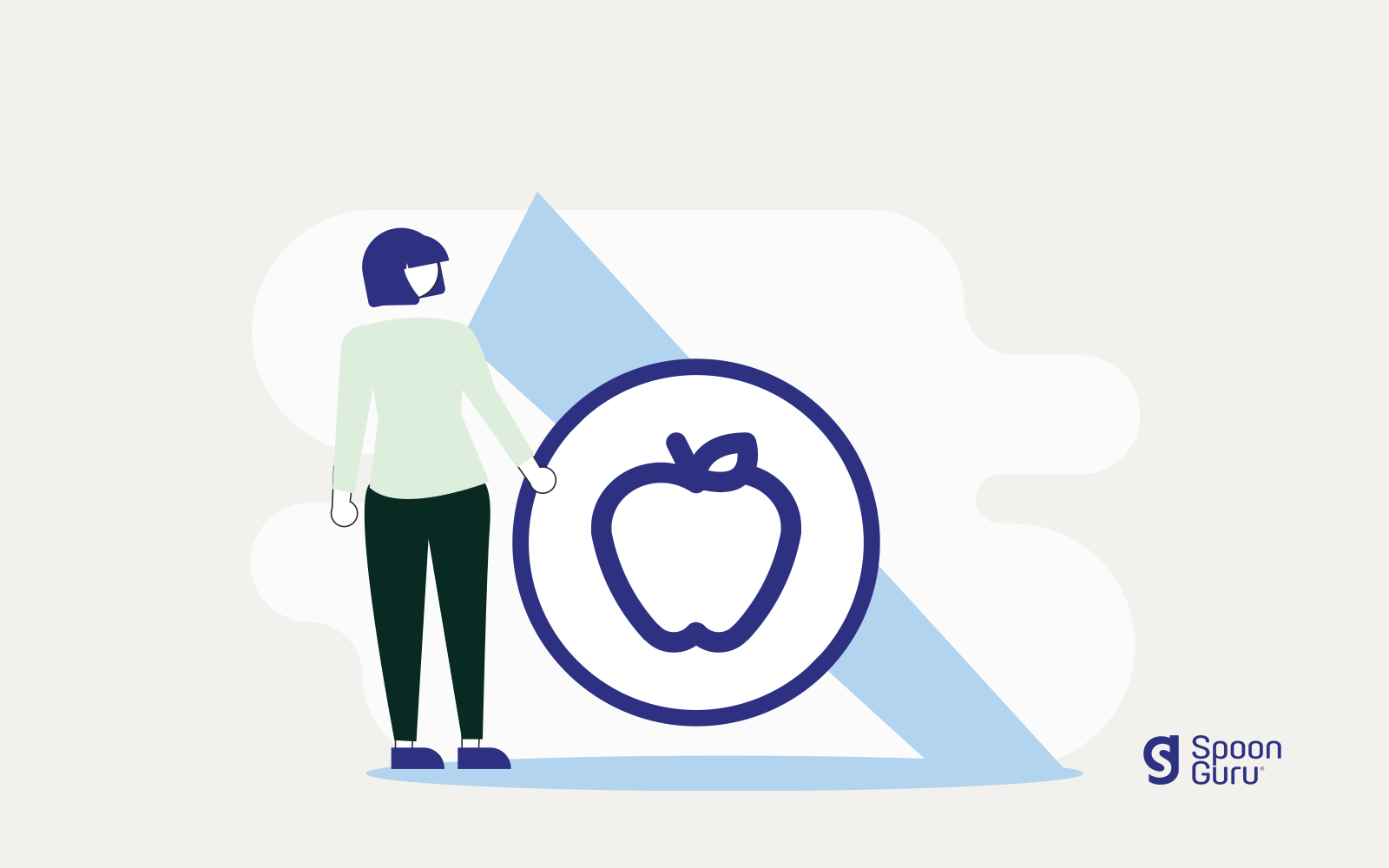In the UK, healthy eating guidelines recommend that fruit and vegetables should make up over a third of what we eat. While it’s recommended that we all eat at least 5 portions of fruit & vegetables each day, teenagers (aged 11-18 years) often have less than 3 portions.
Why it’s important
Fruit and vegetables provide a range of essential vitamins, minerals, and fibre, and diets that are high in fruit and vegetables are associated with a lower risk of diseases such as heart disease, stroke, and some cancers. Because they are generally low in calories, fruit and vegetables can also help to maintain a healthy weight, and their lower greenhouse gas emissions and land use means they can have a lower environmental impact than other types of food.
Plants produce a variety of compounds which give fruit and vegetables their colour and may benefit human health. Different coloured fruit and vegetables contain their own combination of nutrients, so eating a variety of different coloured fruit and vegetables as part of meals and snacks can provide a range of important nutrients.
What does 5 a Day look like?
- A portion of fruit or vegetable is 80g. This could be a medium-sized banana or apple, two or more plums or satsumas, or three heaped tablespoons of cooked vegetables.
- A portion of dried fruit is 30g. This can be a heaped tablespoon of raisins, two figs or three prunes.
- 150ml glass of unsweetened 100% fruit or vegetable juice or smoothie counts as a maximum of one of your 5 a Day
- Three heaped tablespoons of pulses count as a maximum of one of the recommended 5 a Day.
Top tips
Add more fruit and vegetables throughout your day:
- Fruit and vegetables can be included at breakfast, e.g. fruit on porridge, or tomatoes and spinach with eggs on wholemeal toast.
- Snack on different fruit and vegetables during the day – have a fruit or vegetable snack at breaktime.
- Be adventurous and try new vegetables, or even fruit, in savoury dishes!
- Try a tasty salad for lunch – add brightly coloured vegetables such as red pepper or red cabbage and apple slaw.
Fresh, frozen, dried, and canned all count:
- Frozen fruit and vegetables are nutritious and provide a convenient way to increase intake. Frozen spinach can be added to a curry, or frozen berries can be thawed and stirred into low-fat plain yoghurt
- Choose canned fruit and vegetables in natural juice or water with no added sugar or salt. Canned fruit with low fat plain yoghurt makes a tasty dessert!
- Dried fruit should only be eaten at mealtimes to reduce the impact on teeth.
Consider the pennies:
- Use odd bits of vegetables to make a vegetable soup or add to stews, curries, or quiches.
- Use frozen or canned fruit and vegetables as these can be better value than fresh, enable portion control and help to reduce food waste.
- Buy loose fruit and vegetables where you can. This way you will only buy what you need, saving money, and help to prevent food waste.
- Store fruit and vegetables in the fridge below 5°C to extend their shelf life.
- Many supermarkets now sell value boxes with a selection of fruit and vegetables that are surplus, in season or ‘wonky’ produce.
Use Spoon Guru’s Nutrition Intelligence Technology
Spoon Guru has created a 5-A-Day TAG so grocery shoppers can quickly and easily find foods which count towards their 5 a day target. This can be used during the product discovery journey either online through search & filter, or as shelf-edge labels on appropriate products.
To find out more about how Spoon Guru can help your customers easily eat more healthily and find products that fit their dietary needs, contact our team today.
Information from British Nutrition Foundation Healthy Eating Week 2023 Resource.
